
After the year 2021 without visiting my sister Florence in Zug in Switzerland, I finally returned to the Confoederatio Helvetica in March 2022. I stayed over a week. More than a family visit, I organised an excursion to French-speaking Switzerland, also known as Romandy, to visit Maxime and the vineyards of Lavaux in the canton of Vaud, near Lausanne. I also booked a journey on the world-famous Glacier Express from Sankt Moritz to Brig. Furthermore, I looked for a nice way in and out. The ÖBB Nightjet night train from Amsterdam to Zurich and the voyage home via Lyon in France.
Travelling on the Glacier Express is checking a box. It’s an iconic train journey, featuring on all ‘to do’ train lists. A stunning itinerary connecting some of the most wonderful landscapes and railway engineering feats and helped by Switzerland’s top notch marketing give the Glacier Express a gold star status.
What is the Glacier Express?
The Glacier Express (GEX), part of the Grand Train Tour of Switzerland, is a direct train connecting railway stations of the two major mountain resorts of Zermatt and Sankt Moritz via Andermatt in the central Swiss Alps.
The train is not an ‘express’ in the sense of being fast train, but it offers an direct, no changing trains, conection between the two ski resorts. The total journey takes 8 hours and is 291 km (181 miles) long.
It omits stops made by local trains. The Glacier Express is known as “the slowest express train in the world.
Since 2017 the train is operated by the Glacier Express AG, a cooperation jointly owned by the former operators Matterhorn Gotthard Bahn (MGB) and Rhaetian Railway or Rhätische Bahn (RhB). For much of its journey, it also passes along and through the World Heritage Site known as the Rhaetian Railway in the Albula / Bernina Landscapes.
The first Glacier Express started on 30 June 1930 07:30 in Zermatt. Initially, it was operated by three railway companies: the Visp-Zermatt-Bahn (VZ), the Furka Oberalp Bahn (FO), and the RhB.
Since 2003, the train has been operated by RhB and the MGB, which arose from a merger between the BVZ and the FO. Since 2017 the Glacier Express AG, owned by the two former operators, runs the train of the same name.
The entire line is metre gauge (narrow gauge railway), with 23.9 kilometres (14.9 miles) using the rack-and-pinion system both for ascending steep grades and to control descent.
I took the GEX from East to West.




Section 1: Albula Line
Shortly after leaving Sankt Moritz station (1,775 m or 5,823 ft) the train passes Samedan and Bever on the high Engadin plateau. There it continues in the Val Bever before entering the Albula Tunnel at 1,815 m (5,955 ft) under the Albula Pass.
After the tunnel, the train passes through Preda, the first station in the Albula Valley and continues toward Bergün/Bravuogn.
Between these two villages the train has to go through many spirals because of the high difference of altitude within a short distance (400 m or 1,300 ft for 5 km or 3.1 mi).
After another spiral, the train reaches Filisur at the end of the valley at (1,032 m or 3,386 ft). From there, the train passes on the Landwasser Viaduct, the most emblematic landmark of the railway line and continues toward Thusis (720 m or 2,360 ft) where it reaches the Posterior Rhine and follows it to Chur (585 m or 1,919 ft).
Section 2: Chur – Disentis/Mustér – Oberalp Pass – Andermatt
From Chur the train follows back the course of the Rhine at Reichenau through the gorge of Ruinaulta and climbs slowly the valley toward Ilanz (698 m or 2,290 ft), Disentis/Mustér (1,142 m or 3,747 ft) and Sedrun (1,404 m or 4,606 ft).
From Sedrun the line becomes steeper to finally reach its summit, the Oberalp Pass at 2,033 m (6,670 ft). From there the train enters the canton of Uri in Central Switzerland and continues down to Andermatt (1,447 m or 4,747 ft).
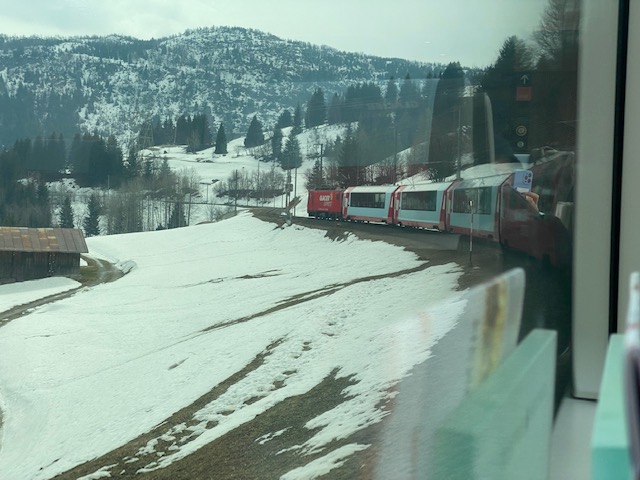

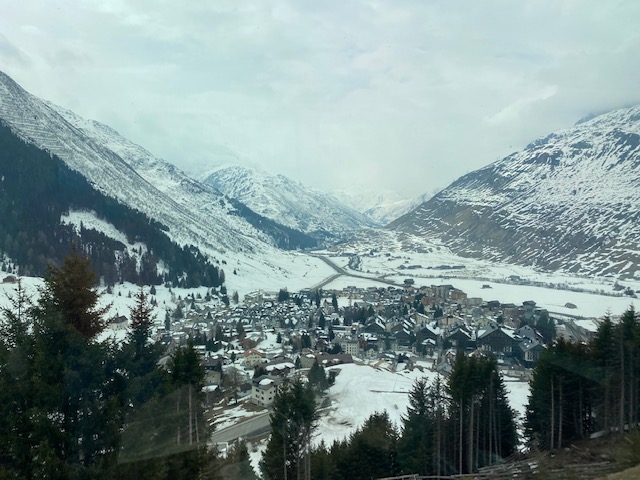

Section 3: Furka
From Andermatt the train goes forward in the valley called Urseren passing the villages of Hospental (1,452 m or 4,764 ft) and Realp (1,538 m or 5,046 ft).
From there the train enters the Furka Base Tunnel, leaving the old railway line which climbs the Furka Pass (operated today by the Furka Cogwheel Steam Railway), to emerge in Oberwald (1,368 m or 4,488 ft) in the Goms Valley, in the canton of Valais (Wallis).
The train then continues toward Brig, following the course of the Rhone, and passes along the villages of Ulrichen (1,346 m or 4,416 ft), Münster-Geschinen (1,359 m or 4,459 ft) and Fiesch (1,049 m or 3,442 ft), before going through another spiral.
My journey ended here, but there is more.
Section 4: Brig to Zermatt
From Brig (678 m or 2,224 ft) the train continues to Visp (651 m or 2,136 ft), then enters the valley of Mattertal and goes up, passing the villages of Stalden (799 m or 2,621 ft), St. Niklaus (1,127 m or 3,698 ft) and Randa (1,408 m or 4,619 ft), where a spectacular debris avalanche completely disconnected the railway and road in 1991.
Täsch (1,450 m or 4,760 ft) is an important station as it is the end of the open road, and therefore a terminal for motorists. After a steeper section the train finally arrives in Zermatt at 1,616 m (5,302 ft), after nearly 8 hours of travel.
I will do that on a next occasion. Danny did this section in 2013. There he went up the Matterhorn Glacier Paradise.
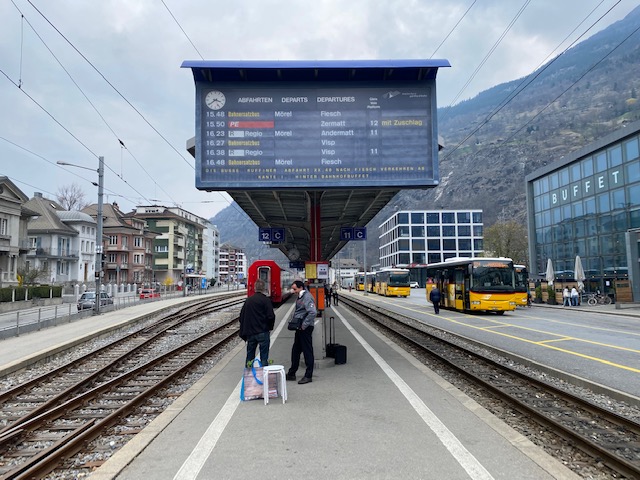

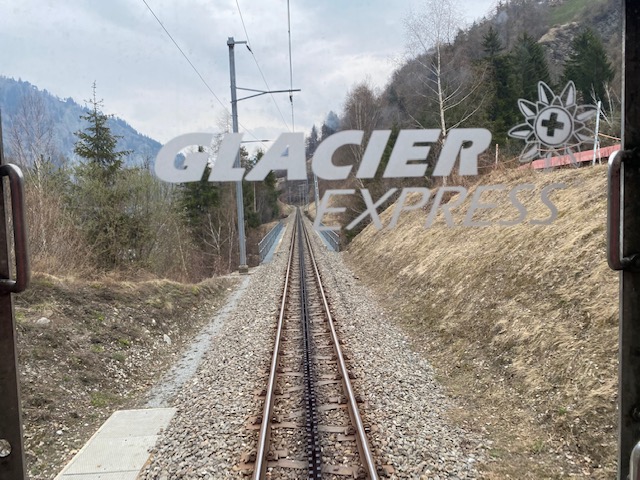
What’s the Glacier Express like?
What’s the Glacier Express like? My train consisted of six cars, two first class cars, the catering car, a first class car and two second class cars. There were no ‘Excellence Class‘ cars on this train.
All passenger cars are panorama cars. First class has 2+1 configuration, second class 2+2. The seats look similar. They are quite firm. There are nice tables to have your lunch served on.
In first, every seat has a power outlet. There’s also an infotainment system, consisting of tourist information channels, a channel with traditional Swiss music and a channel with modern German-language music.





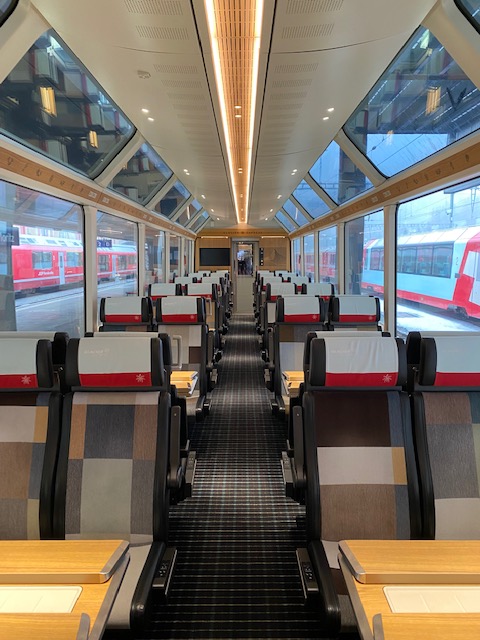
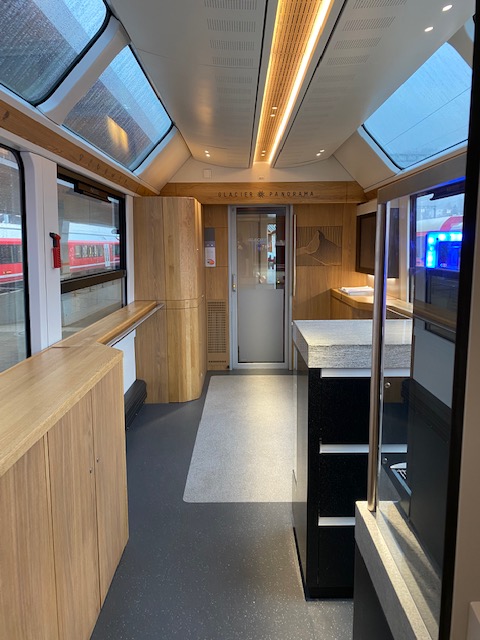


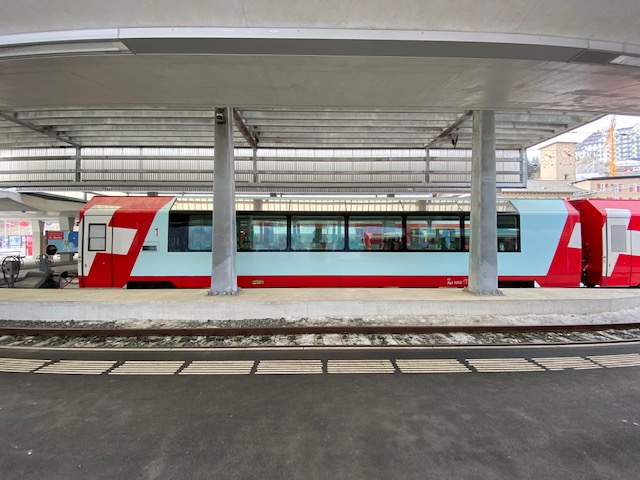

Catering
There is a menu with quite a few options. In first, you’re served at your seat. I booked a three-course menu.
The table was set early, and lunch was served shortly after noon. It consisted of tomato soup as a starter, meatloaf, vegetables and mash as a main, and a cheese plate or a chocolate brownie as desert. I had the brownie.
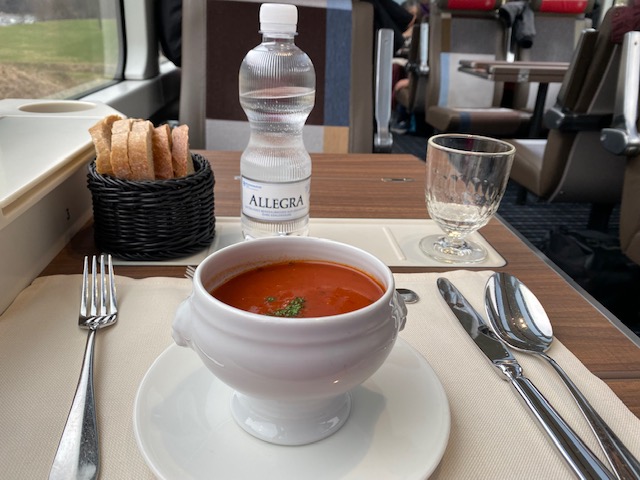
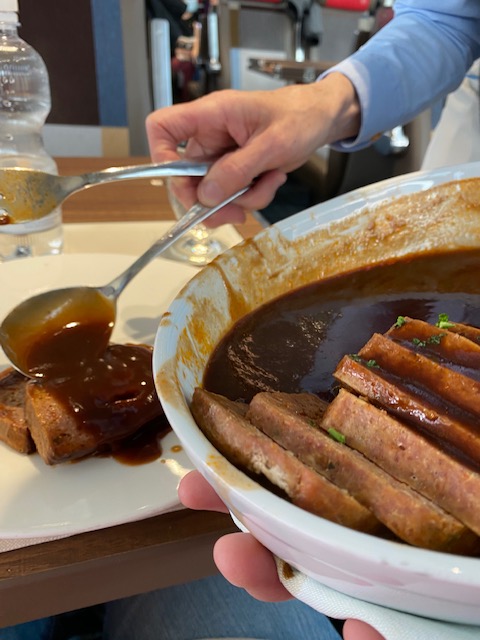

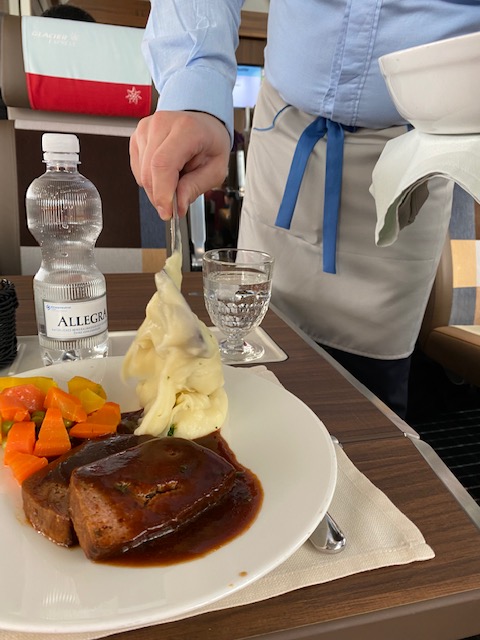
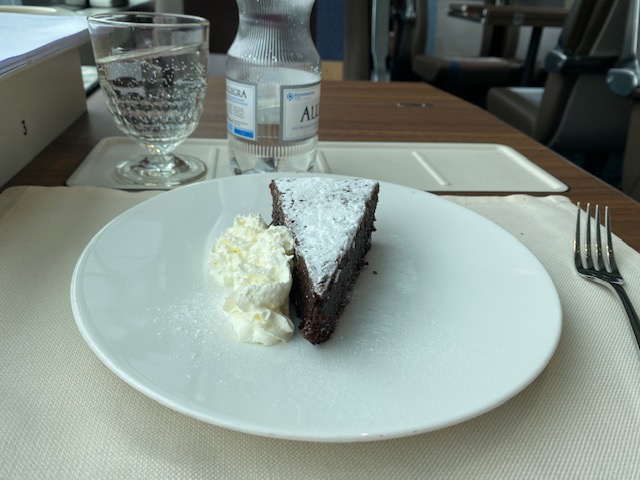
There’s an extensive wine list. You ca have mixers, hot drinks, beer, soft drinks and obviously water.
Also
The Glacier Express ís expensive. Read the terms and conditions well, because it turned out I only booked a reservation, not ‘the kilometers’. So I used my FIP coupon for railway employees and bought an upgrade.
So?
Yes, the Glacier Express is a really nice way to do the journey without figuring out regular trains. But those remain a more affordable option. Still, being waited on, sitting in a comfortable seat in a pretty looking panoramic car is a great experience. The livery, the atmosphere. It’s just so pleasant.
It also helped the train wasn’t as full as in pre-COVID-19 times. I was able to move around and there was no struggle or frustration to have a good spot for taking photos.
Switzerland 2022
- Zandvoort, home of the Formula 1 Dutch Grand Prix.
- REVIEW | ÖBB Nightjet Amsterdam – Zurich night train.
- SWITZERLAND 2022 | Thun and Thun Castle.
- SWITZERLAND 2022 | The Lausanne Métro.
- REVIEW | Hotel du Raisin in Lausanne.
- SWITZERLAND 2022 | The Vineyard Terraces of Lavaux in Vaud.
- SWITZERLAND 2022 | Two days in Lausanne.
- Romandy.
- SWITZERLAND 2022 | Sankt Moritz.
- REVIEW | Hotel Arte in Sankt Moritz.

Wow! Wonderful post! Love the train! Food looks delicious!
Thank’s for share, Timothy.
Have an excellente week!
Elvira
LikeLiked by 1 person
Yes. It was on my bucket list.
Have a wonderful week, Elvira.
LikeLiked by 1 person
Great Timothy!
You as well!
LikeLiked by 1 person